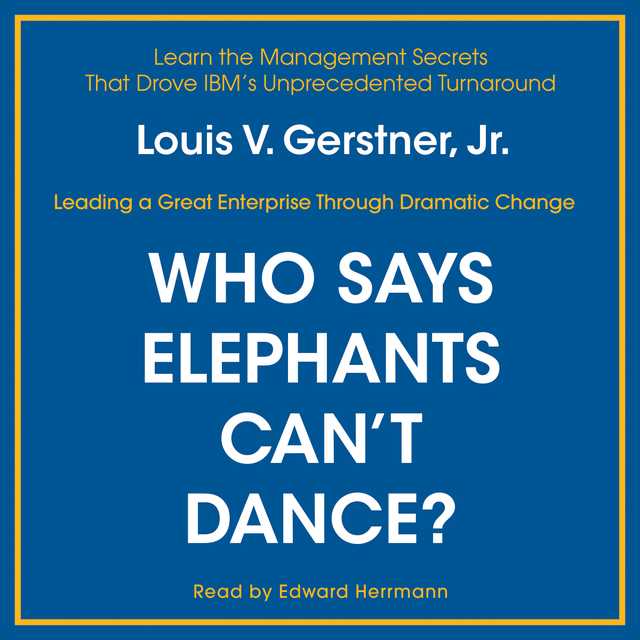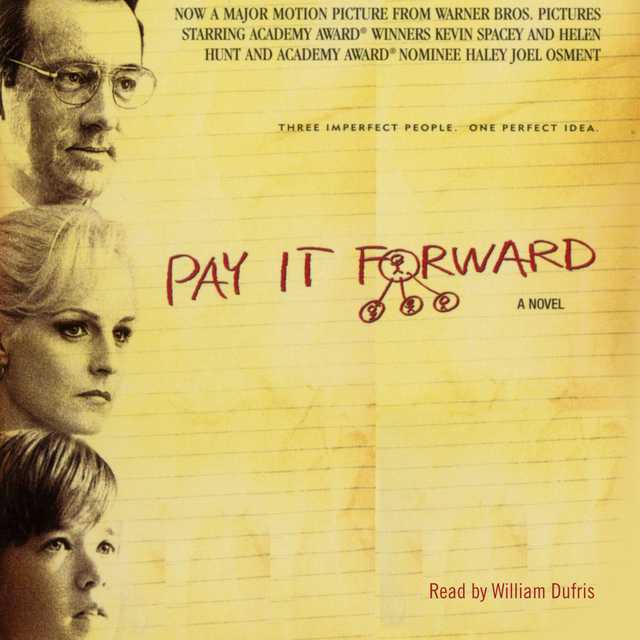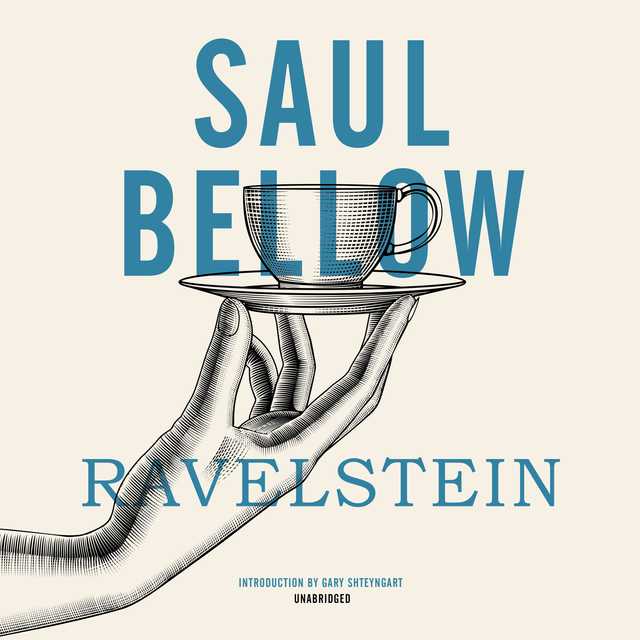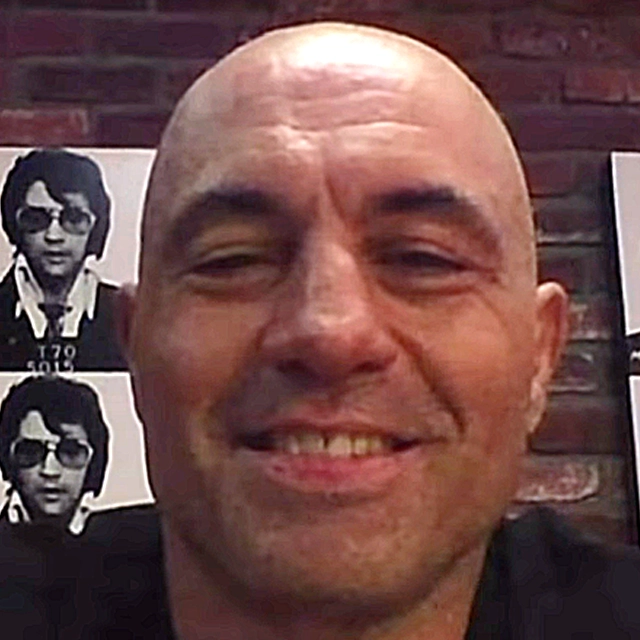Who Says Elephants Can’t Dance? Audiobook Summary
Writing in an exciting, fast-paced narrative style, Gerstner takes readers through his experiences at IBM — from the high-powered recruiting pressure to take the Chairman’s position, to first days on the job learning the strengths and weaknesses of IBM, to formulating and successfully implementing a turnaround strategy.
Filled with Gerstner’s personal insights as he explores the company, institutes changes, and rebuilds IBM for the 21st century, readers will have unprecedented access to the mind of the CEO. Refreshing and candid throughout, Gerstner pulls no punches as shows readers what he did and why he did it.
Other Top Audiobooks
Who Says Elephants Can’t Dance? Audiobook Narrator
Edward Herrmann is the narrator of Who Says Elephants Can’t Dance? audiobook that was written by Louis V. Gerstner
Edward Herrmann, a Tony Award(r) winner and nominee, has starred on both Broadway and the West End, and appeared in well over forty motion pictures; he is perhaps best known for his portrayal of FDR in Eleanor and Franklin, as well as for his role on The Gilmore Girls.
About the Author(s) of Who Says Elephants Can’t Dance?
Louis V. Gerstner is the author of Who Says Elephants Can’t Dance?
More From the Same
- Author : Louis V. Gerstner
- Who Says Elephants Can’t Dance?
- Publisher : HarperAudio
- Abraham
- American Gods [TV Tie-In]
- Dead Ringer
- House of Sand and Fog
- Prey
Who Says Elephants Can’t Dance? Full Details
| Narrator | Edward Herrmann |
| Length | 6 hours 26 minutes |
| Author | Louis V. Gerstner |
| Category | |
| Publisher | HarperAudio |
| Release date | August 11, 2004 |
| ISBN | 9780060785406 |
Subjects
The publisher of the Who Says Elephants Can’t Dance? is HarperAudio. includes the following subjects: The BISAC Subject Code is Business & Economics, General
Additional info
The publisher of the Who Says Elephants Can’t Dance? is HarperAudio. The imprint is HarperAudio. It is supplied by HarperAudio. The ISBN-13 is 9780060785406.
Global Availability
This book is only available in the United States.
Goodreads Reviews
Ahmad
June 17, 2021
Who Says Elephants Can't Dance? Inside IBM's Historic Turnaround, Louis V. Gerstner Jr. This is CEO Louis V. Gerstner Jr's memoir about the turnaround of IBM and his transformation of the company into the industry leader of the computer age. When Gerstner became CEO of IBM in 1993, shares were in free fall and the company was on the verge of collapse. Hired for his successful management of RJR Nabisco and American Express, Gerstner had no background in technology, but during his seven-year chairmanship, he transformed the company into the leading force of the computer age.عنوانهای چاپ شده در ایران: «چه کسی میگوید فیل ها نمیتوانند برقصند؟»؛ «رقص فیلها - لویی گشنر و معجزه ی تحول آی.بی.ام.»؛ «رقص فیلها: سرگذشت تحول آی.بی.ام.»؛ نویسنده: لوئیس وی گرستنر جونیور؛ تاریخ نخستین خوانش: روز نوزدهم ماه جولای سال 2003میلادیعنوان: چه کسی میگوید فیل ها نمیتوانند برقصند؟؛ نویسنده: لوئیس وی گرستنر جونیور؛ مترجم: امیر توفیقی؛ ویراستار محب الله گل بابایی؛ تهران، انستیتو ایزایران، 1382؛ در 427ص؛ شابک: 9648068305؛ جدول، نمودار، چاپ دوم 1384؛ در 317ص؛ شابک 9648068690؛ موضوع تاریخ شرکت آی.بی.ام صنعت کامپیوتر، از نویسندگان ایالات متحده آمریکا سده 20معنوان: رقص فیلها - لویی گشنر و معجزه ی تحول آی.بی.ام؛ عنوان روی جلد: رقص فیلها: سرگذشت تحول آی.بی.ام.؛ نویسنده: لویی گشنر؛ مترجم: غلامحسین خانقائی؛ تهران، فرا، 1384؛ در 354ص؛ شابک 9647092466؛ چاپ دوم 1385؛ چاپ سوم 1388؛ چاپ پنجم 1394؛ شابک: 9780647092463؛ تاریخ صنعت کامپیوتر و تحول شرکت کامپیوتری «آی.بی.ام» استتاریخ بهنگام رسانی 27/03/1400هجری خورشیدی؛ ا. شربیانی
Omar
August 04, 2013
Below are key excerpts that I found particularly insightful in this book, detailing the turnaround that Louis Gerstner engineered at IBM in the 1990s:1- "Thus began a lifelong process of trying to build organizations that allows for hierarchy but at he same time bring people together for problem solving, regardless of where they are positioned within the organization."2- "I went on to summarize my management philosophy and practice: I manage by principle, not procedure. The marketplace dictates everything we should do. I'm a big believer in quality, strong competitive strategies and plans, teamwork, payoff for performance, and ethical responsibility. I look for people who work to solve problems and help colleagues. I sack politicians. I am heavily involved in strategy; the rest is yours to implement. Just keep me informed in an informal way. Don't hide bad information—1 hate surprises. Don't try to blow things by me. Solve problems laterally; don't keep bringing them up the line. Move fast. If we make mistakes, let them be because we are too fast rather than too slow. Hierarchy means very little to me. Let's put together in meetings the people who can help solve a problem, regardless of position. Reduce committees and meetings to a minimum. No committee decision making. Let's have lots of candid, straightforward communications. I don't completely understand the technology. I'll need to learn it. but don't expect me to master it. The unit leaders must be the translators into business terms for me."3- "After all the customer and employee and industry meetings, as well as weekend and air travel reflection, I was indeed ready to make four critical decisions: Keep the company together. Change our fundamental economic model. Reengineer how we did business. Sell underproductive assets in order to raise cash."4- "I've had a lot of experience turning around troubled companies, and one of the first things I learned was that whatever hard or painful things you have to do, do them quickly and make sure everyone knows what you are doing and why."5- "The sine qua non of any successful corporate transformation is public acknowledgment of the existence of a crisis. If e So there must be a crisis, and it is the job of the CEO to define and communicate that crisis, its magnitude, its severity, and its impact. Just as important, the CEO must also be able to communicate how to end the crisis—the new strategy, the new company model, the new culture. All of this takes enormous commitment from the CEO to communicate, communicate, and communicate some more."6- "What drives IBM's unique complexity is twofold. First, every institution and almost every individual is an actual or potential customer of IBM. In The second complexity factor is the rate and pace of the underlying technology."7- "All of our efforts to save IBM—through right-sizing i and reengineering and creating strategy and boosting morale and all the rest—would have been for naught if, while we were hard at work on the other things, the IBM brand fell apart. I have always believed a successful company must have a customer/market•lace orientation and a strong marketing organization. That's why my second step in creating a global enterprise had to be to fix and focus IBM's marketing efforts."8- "We made four major changes to our compensation system...This was all about pay for performance, not loyalty or tenure. It was all about differentiation: Differentiate our overall pay based on the marketplace; differentiate our increases based on individual performance and pay in the marketplace; differentiate our bonuses based business performance and individual contributions; and differentiate our stock-option awards based on the critical skills of the individual and our risk of loss to competition."9- "I wanted IBMers to think and act like long-term shareholders to feel the pressure from the marketplace to deploy assets and forge strategies that create competitive advantage. The market, over time, represents a brutally honest evaluator of relative performance, and what I needed was a strong incentive for IBMers to look at their company from the outside in."10- "The skills required in managing services processes are very different from those that drive successful product companies. We had no experience building a labor-based business inside an asset-intensive company. We were expert at managing factories and developing technologies. We understood cost of goods and inventory turns and manufacturing. But a human-intensive services business is entirely different. In services you don't make a product and then sell it. You sell a capability. You sell knowledge. You create it at the same time you deliver it. The business model is different. The economics are entirely different."11- "My point is that all of the assets that the company needed to succeed were in place. But in every case—hardware, technology, software, even services—all of these capabilities were part of a business model that had fallen wildly out of step with marketplace realities...The implications of this kind of leap to a company's economic model can be devastating. In IBM's case it meant the collapse of gross profit margins and the attendant changes we had to engineer to lower our cost structure without compromising our effectiveness. Yet the hardest part of these decisions was neither the technological nor economic transformations required. It was changing the culture—the mindset and instincts of hundreds of thousands of people who had grown up in an undeniably successful company, but one that had tor decades been immune to normal competitive and economic forces. The challenge was making that workforce live, compete, and win in the real world. It was like taking a lion raised for all of its life in captivity and suddenly teaching it to survive in the jungle."12- "You've probably found, as I have, that most companies say their cultures are about the same things—outstanding customer service. excellence, teamwork, shareholder value, responsible corporate behavior, and integrity. But, of course, these kinds of values don't necessarily translate into the same kind of behavior in all companies—how people actually go about their work, how they interact with one another, what motivates them. That's because, as with national cultures. most of the really important rules aren't written down anywhere."13- "In comparison, changing the attitude and behavior of hundreds of thousands of people is very, very hard to accomplish. Business schools don't teach you how to do it. You can't lead the revolution from the splendid isolation of corporate headquarters. You can't simply give a couple of speeches or write a new credo for the company and declare that the new culture has taken hold. You can't mandate it, :an't engineer it. What you can do is create the conditions for transformation. You can provide incentives. You can define the marketplace realities and goals. But then you have to trust. In fact, in the end, management doesn't change culture. Management invites the workforce itself to change the culture."14- "Thee work-a-day world of business isn't about fads or miracles. There are fundamentals that characterize successful enterprises anc successful executives. They are focused. They are superb at execution. They abound with personal leadership."15- "At the end of the day a successful, focused enterprise is one that has developed a deep understanding of its customers' needs, its competitive environment, and its economic realities. This comprehensive analysis must then form the basis for specific strategies :hat are translated into day-to-day execution."16- "Earlier in this section I mentioned that in every industry it is possible to identify the five or six key success factors that drive leadership performance. The best companies in an industry build processes that allow them to outperform their competitors vis-a-vis these success factors."17- "This next generation of leaders—in both the public and private sectors—will have to expand its thinking around a set of economic, political, and social considerations. These leaders will be: Much more able to deal with the relentless, discontinuous change that this technology is creating. Much more global in outlook and practice. Much more able to strike an appropriate balance between the instinct for cultural preservation and the promise of regional or global cooperation. Much more able to embrace the fact that the world is moving to a model in which the "default" in every endeavor will be openness and integration, not isolation."
Prajakta
January 25, 2016
I don't usually read business books. If I do, I never read them on a Sunday! "Who says Elephants Can't dance?" is unpretentious, witty and honest all at once. The fact that Lou does not consider himself a technologist helps. He explains the underpinnings of the IT industry and IBM lucidly. This razor sharp focus on competition, execution & change management are compelling. However, the most important leadership trait that exudes is his ability to understand "what drives people". He says, "People don't do what you expect but what you inspect." Revamping the compensation philosophy and overhauling culture change of a company as big as IBM is no mean feat. The Appendix elucidating the many letters he wrote to IBMers drives the importance for communication in times of change and otherwise. Excerpt: "Employees in any institution frequently complain and rightly so: " Why do I have to hear news about my company on TV or the radio before I hear it from the company?"..required to break news first to the shareholders through the media. However I have always made it a point to make sure our employees hear the news literally seconds later. " No doubt he was able to build credibility with stakeholders both internal and external.This book taught me "small things make a big difference!".
Anusha
May 12, 2019
I don't fancy business books as much. This book wasn't even my pick, it was a friend's. I don't know what force made me pick it. I couldn't keep the book down after I read the first page. It was a book that I needed, wanted to read, experience through someone as senior to tell me what it takes to make a historic turnaround.The turmoils and tornadoes that seek you on your journey to make things happen are nothing but bricks of the pillars of a brilliant change. This book inspired me, kept me grounded, filled me with gratitude and lot more emotions that were completely new to me. Thank you Louis for this book!
Michael
April 28, 2012
Absolutely brilliant story and insight from a non-tech executive turning around the world's biggest tech company - despite all odds.
Eskay
May 28, 2022
One of the initial business bios i had read, it offers a great insight into the workings of a labyrinthine organization with many moving parts
Utkarsh
June 11, 2021
IBM. The only time I thought about this company growing up was when the TV would air their Smarter Planet advertisements. I found them very cool, but never really understood what IBM did anyways. Lou and his story of turning around IBM is a lucid exposition of how culture and people are critical to an organization's survival and renewal. Books like these restore my faith in my job, and the impact it can create. The stories are simple yet powerful and I personally found Lou Gerstner's style very unassuming and rolled up sleeves-ish. Jeez, who signs up to be the CEO of a colossus like IBM - a ship that seems to be sinking into the Deep Blue - without even being a Technology guy? The answer is simple - a very gutsy guy. For someone who is in IT, this book felt like reading a history book on IT - and IBM truly has been a shaper of this history. Also, did I mention that I heard this book in audiobook format? I think this format is no longer the pariah that I had for so long deemed it to be. What I liked: The anecdotes (all of them), all the moments where Lou talks about the incredulous practices he saw in his initial days at IBM, and the gentle humour that he brings into his recollection.What I didn't like: Maybe a bit longish, would have not minded skipping the last few chapters AT ALL. By then, I was too invested in IBM to care about musings about the industry and its future.
Terry
May 19, 2021
Great insights and lessons from a top business leader who orchestrated one of the greatest corporate turnarounds in recent memory. This a must-read for anyone with or planning a career in business, government, or social enterprise. It is written in a clear, concise, and easy-going style that reflects Lou's genuine and honest perspectives on the nine years he spent leading IBM from the brink of collapse to the successful global organization it became under his stewardship. Given the inherent scope, depth and profound value, I am putting this on my list of re-read books.
Akshith
November 10, 2018
Lou does a great job of explaining how age old incumbents can take some tips from the IBM turnaround. An interesting and gripping read that shall be highly relatable to anyone working in slow moving elephants
Will
May 06, 2021
The most practical business book I’ve read. Very readable and easy to digest. Interesting man & interesting organisation. I’ll aim to re-read in 18months.
Tiklu
October 18, 2017
Just read this book. You must read this to understand what a truly visionary person Lou is. Also, this is a great read for any managers.
Matias
December 12, 2020
A very un-business book-like business book. Gerstner just simply gives the facts and the honest story of IBM's transformation. There is no jargon, no grandeur, and no big words. I highly recommend reading this book. In addition, it was funny to think while reading the book that today, IBM is again in need of a radical transformation.
Vidisha
February 09, 2020
** spoiler alert ** Basically it is a book, that shows how IBM revived itself from a loss making comping and to a profitable one.The book talks about how Louis Gerstner (the author himself) changed the way of doing business for IBM by partnering with its competitors, building strategies that talks about cutting down costs of its products in a tactful manner, winning as a global team and not restricting success to a particular geography, the new marketing plan that came up with "IBM for smarter planet" ad campaign, etc that worked in the favor of the company. Its a treat!
Joel
January 18, 2020
Great insights into a huge turnaround of one of the largest companies in the world. A fascinating read if you're in the mood for it. Personally, there are some market changes that have been going on in the past few years within Buffer's market, and so I found it very interesting to read about some much larger scale market changes and necessary action to turn a company around from a clear decline.I particularly enjoyed reading about the strategy decisions, the approach convert that into execution, and the cultural adjustments needed to make it all successful. Some of the history of IBM was interesting, though some of it felt a bit dense to get through. Similarly, I wasn't as interested in the author's personal history, though some of it is context for his approach to leading IBM.One thing that bugged me a little, is that there's a lot of military jargon used in the context of business throughout the book, and a lot of zero sum mentality, of winning by others losing.Some of the highlights for me, in the form of quotes I highlighted:"Move fast. If we make mistakes, let them be because we are too fast rather than too slow.""I’ve had a lot of experience turning around troubled companies, and one of the first things I learned was that whatever hard or painful things you have to do, do them quickly and make sure everyone knows what you are doing and why.""Fixing IBM was all about execution. We had to stop looking for people to blame, stop tweaking the internal structure and systems. I wanted no excuses. I wanted no long-term projects that people could wait for that would somehow produce a magic turnaround. I wanted—IBM needed—an enormous sense of urgency.""So the truly unique challenge of my first few months at IBM was to reject the knee-jerk responses that would have destroyed the company, and to focus on day-to-day execution, stabilizing the company while we sought growth strategies that would build on our unique position in the industry.""In the past, IBM was both the employer and the scorekeeper in the game. I needed my new colleagues to accept the fact that external forces—the stock market, competition, the changing demands of customers—had to drive our agenda, not the wishes and whims of our team.""For the first time in my career, I was in a position to make a different kind of mark, to help something truly important live and thrive. I wasn’t going to walk away from that.""This is about the bone-jarringly difficult task of forcing the organization to limit its ambition and focus on markets that made strategic and economic sense.""For investors as well as customers, the lesson was: no shortcuts. I think for a lot of people, the “e” in e-business came to stand for “easy.” Easy money. Easy success. Easy life. When you strip it down to bare metal, e-business is just business. And real business is serious work.""I came to see, in my time at IBM, that culture isn’t just one aspect of the game—it is the game. In the end, an organization is nothing more than the collective capacity of its people to create value. Vision, strategy, marketing, financial management—any management system, in fact—can set you on the right path and can carry you for a while. But no enterprise—whether in business, government, education, health care, or any area of human endeavor—will succeed over the long haul if those elements aren’t part of its DNA.""you can quickly figure out, sometimes within hours of being in a place, what the culture encourages and discourages, rewards and punishes. Is it a culture that rewards individual achievement or team play? Does it value risk taking or consensus building?""What you can do is create the conditions for transformation. You can provide incentives. You can define the marketplace realities and goals. But then you have to trust. In fact, in the end, management doesn’t change culture. Management invites the workforce itself to change the culture.""To someone arriving at IBM from the outside, there was a kind of hothouse quality to the place. It was like an isolated tropical ecosystem that had been cut off from the world for too long. As a result, it had spawned some fairly exotic life-forms that were to be found nowhere else. And because IBM was so deeply inbred and ingrown, so preoccupied with its own rules and conflicts, it had lost its robustness. It had become extremely vulnerable to attack from the outside.""The fact is, in most cases a company has a set of competitive advantages in its base business. It may be hard—very hard—to redirect or reenergize an existing enterprise. Believe me, it’s a lot easier than throwing that enterprise over the fence into a totally new environment and succeeding. Age-old common sense: Stick to your knitting; dance with the partner who brought you. History shows that truly great and successful companies go through constant and sometimes difficult self-renewal of the base business. They don’t jump into new pools where they have no sense of the depth or temperature of the water.""acquisitions that fit within an existing strategy have the most likely probability of success. Those that represent attempts to buy new positions in new marketplaces or that involve smashing together two very similar companies are fraught with risk.""Vision statements can create a sense of confidence—a sense of comfort—that is truly dangerous. Vision statements are for the most part aspirational, and they play a role in creating commitment and excitement among an institution’s employees. But in and of themselves they are useless in terms of pointing out how the institution is going to turn an aspirational goal into a reality.""good strategies are long on detail and short on vision.""too often the executive does not understand that people do what you inspect, not what you expect""Execution is the tough, difficult, daily grind of making sure the machine moves forward meter by meter, kilometer by kilometer, milestone by milestone. Accountability must be demanded, and when it is not met, changes must be made quickly. Managers must be asked to report on their performance and explain their successes and failures. Most important, no credit can be given for predicting rain—only for building arks."
Tirath
February 12, 2018
Always thought this would be a bore, but it's so enriching.Intg experiences of a guy who was heading Amex's business and then RJR Nabisco - who then comes to a bumbling behemoth called IBM.And it's interesting to note that IBM had lost so much of its soul and purpose, and this guy put the ship together. No doubt that the IT boom would have aided it, but it was strongly losing out to new players when it shouldnt have beenGreat stuff about organisation structure, proxy taking over agility, a cultural rot, a leadership vacuum, about focusing on a few pieces and missing the boat on a few others. About centralisation as a powerful tool against decentralisaton.Compensation, incentives, accountability - there were a lot of things that needed to be fixed ; and its great to read how he led this turnaround.And the title is perfect, because IBM was then and is still quite an elephant; and everybody believed that its too big to move gracefully. :)A well deserved classic on turning around an organisation.
Joe
April 30, 2012
I have worked hands-on daily with IBM hardware, software and services for well over a decade, some of which overlapping with Lou Gerstner's period as CEO of the company, so I picked this up expecting not to learn much I hadn't already known about IBM. I was entirely wrong. This is a really engaging and honest account of the turnaround of a company that was literally falling apart as it failed to adapt to the changing world in which it was operating. The clarity of purpose which Gerstner, as a 'non IT person', brought to the company and it's strategic direction shines throughout. The book could be accused of being one-sided, but the performance of IBM during Gerstner's time at the helm is so remarkable that some element of victors writing the history is understandable. The insight into 'bet the company' decisions and simple management strategies applied to the giant organisation that is IBM is really fascinating. Great read, highly recommended.
Greg
May 22, 2019
Probably the greatest corporate turnaround of all time. Has an appropriate blend of depth and breadth. I sourced much excellent material from this book in my writing of How to Think Strategically.
Most Popular Audiobooks
Frequently asked questions
Listening to audiobooks not only easy, it is also very convenient. You can listen to audiobooks on almost every device. From your laptop to your smart phone or even a smart speaker like Apple HomePod or even Alexa. Here’s how you can get started listening to audiobooks.
- 1. Download your favorite audiobook app such as Speechify.
- 2. Sign up for an account.
- 3. Browse the library for the best audiobooks and select the first one for free
- 4. Download the audiobook file to your device
- 5. Open the Speechify audiobook app and select the audiobook you want to listen to.
- 6. Adjust the playback speed and other settings to your preference.
- 7. Press play and enjoy!
While you can listen to the bestsellers on almost any device, and preferences may vary, generally smart phones are offer the most convenience factor. You could be working out, grocery shopping, or even watching your dog in the dog park on a Saturday morning.
However, most audiobook apps work across multiple devices so you can pick up that riveting new Stephen King book you started at the dog park, back on your laptop when you get back home.
Speechify is one of the best apps for audiobooks. The pricing structure is the most competitive in the market and the app is easy to use. It features the best sellers and award winning authors. Listen to your favorite books or discover new ones and listen to real voice actors read to you. Getting started is easy, the first book is free.
Research showcasing the brain health benefits of reading on a regular basis is wide-ranging and undeniable. However, research comparing the benefits of reading vs listening is much more sparse. According to professor of psychology and author Dr. Kristen Willeumier, though, there is good reason to believe that the reading experience provided by audiobooks offers many of the same brain benefits as reading a physical book.
Audiobooks are recordings of books that are read aloud by a professional voice actor. The recordings are typically available for purchase and download in digital formats such as MP3, WMA, or AAC. They can also be streamed from online services like Speechify, Audible, AppleBooks, or Spotify.
You simply download the app onto your smart phone, create your account, and in Speechify, you can choose your first book, from our vast library of best-sellers and classics, to read for free.
Audiobooks, like real books can add up over time. Here’s where you can listen to audiobooks for free. Speechify let’s you read your first best seller for free. Apart from that, we have a vast selection of free audiobooks that you can enjoy. Get the same rich experience no matter if the book was free or not.
It depends. Yes, there are free audiobooks and paid audiobooks. Speechify offers a blend of both!
It varies. The easiest way depends on a few things. The app and service you use, which device, and platform. Speechify is the easiest way to listen to audiobooks. Downloading the app is quick. It is not a large app and does not eat up space on your iPhone or Android device.
Listening to audiobooks on your smart phone, with Speechify, is the easiest way to listen to audiobooks.






























